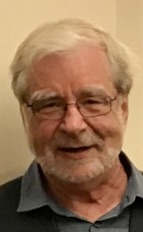Expanding our Contextual Awareness
- Marvin T. Brown

- Feb 1, 2022
- 4 min read
Updated: Mar 28, 2023

To understand the point of A Climate of Justice, it’s necessary to acknowledge that we always live in some historical context. The liberal tradition, for the most part dismisses this fact, and focuses on individuals and on the future—the world of unlimited possibilities.
The social philosopher, Kenneth Burke, said that to fully understand any human action, you must know something about the actor, the action, the actor’s purpose, when it happened and where it happened. (Who? What? Why? Where? When?) These questions are also called the “journalistic questions” because answering the questions is an efficient way to write a full report of any incident. Interestingly enough; 2 out of the 5 (where and when) refer to the social and environmental context.
In a sense, contextual awareness is a part of everyday life. When we meet at a “social gathering,” for example, we usually follow the contextual expectations of refraining from any uncomfortable exposure of both ourselves and others. In such settings, “we” share the same context and ignore differences that would disrupt our polite conversations.
These “social gathering,” however, are contained in a larger context where the polite unity of the “we” splits into disunity. Instead of relations among equals, we see relations among unequals, relations among the arrogant and the vulnerable, relations among whites and People of Color, relations among the perpetrators and the victims of crimes against humanity.
What Viet Thanh Nguyen says in his book, Nothing Ever Dies: Vietnam and the Memory of War, about the difference between an ethnic box and its racial content could help us identify this broader context of crimes against humanity.
We might say that the form of the box is ethnic, and its contents are racial. The ethnic is what American can assimilate, while the racial is what America cannot digest. In American mythology, one ethnic is the same, eventually, as any other ethnic; the Irish, the Chinese, the Mexican, and, eventually, hopefully, the black, who remains at the outer edge as a defining limit and the colored line of ethnic hope in America. But the racial continues to roil and disturb the American dream, diverting the American way from its road of progress. If form is ethnic and content is racial, then the box one opens in the hopes of finding something savory may yet contain that strange thing, foreign by way of smell and sight, which refuses to be consumed so easily: slavery, exploitation, and expropriation, as well as poverty, starvation, and persecution (p. 99).
Some Americans will find this exposure of content much more unsavory than others. In fact, for some, such exposure may allow them to be seen and respected. Others, especially if they cannot distinguish their humanity from the inhumanity of the context, will rebel against the truth. They will understand the notion of a “climate of injustice,” in other words, as an indictment of them as inhumane. Remember, we are not our context, but until we change its content, we live in it.
“We” have different relations with our context, in other words, and therefore different relations with each other. Expanding our contextual awareness allows us to see how others see us, and for us to reflect on how we see ourselves. Contextual awareness can expand, in some cases, self-awareness.
Whether our social gathering in inside or outside, it occurs not only in a social context, but also a natural or environmental context. This context also has a history and a legacy. Our nation was not only founded on cheap labor, but also cheap land. Only with the arrival of European colonists and settlers, was the American earth treated as a commodity, as a thing. The long history of treating the earth as our dominion, rather than our shared habitat—to see ourselves apart from nature rather than a part of nature—has unbalanced not only our relationship with nature, but now nature with itself.
Expanding our contextual awareness could help us see ourselves from the perspective of the devastation of the natural world. The social and the natural context, in other words, are not unrelated. As a leader in the field of environmental justice, Carl Anthony, said some time ago:
The dehumanization required to enslave people rests upon the same arrogance that allows the dominators to use, abuse, and pollute Earth’s living ecosystem. This dehumanization continues when the contributions of people of color are missing from the history of the modern world. Humanity cannot develop a radically new ecological conscience until we re-tell its story to include the various histories and perspectives of people of color. Attempting to solve the problem of ecosystem exploitation will never work without facing up to its companion—waste and human exploitation caused by racism (The Earth, the City, and the Hidden Narrative of Race 2017, p. 17-18)
The deconstruction of arrogance, especially systems of arrogance, is no easy assignment. The problem is that we continue to live in a context—a climate of injustice—that allows and sometimes awards arrogance. To change the context, as Viet Thanh Nguyen suggests, is to change American mythology.

Comments